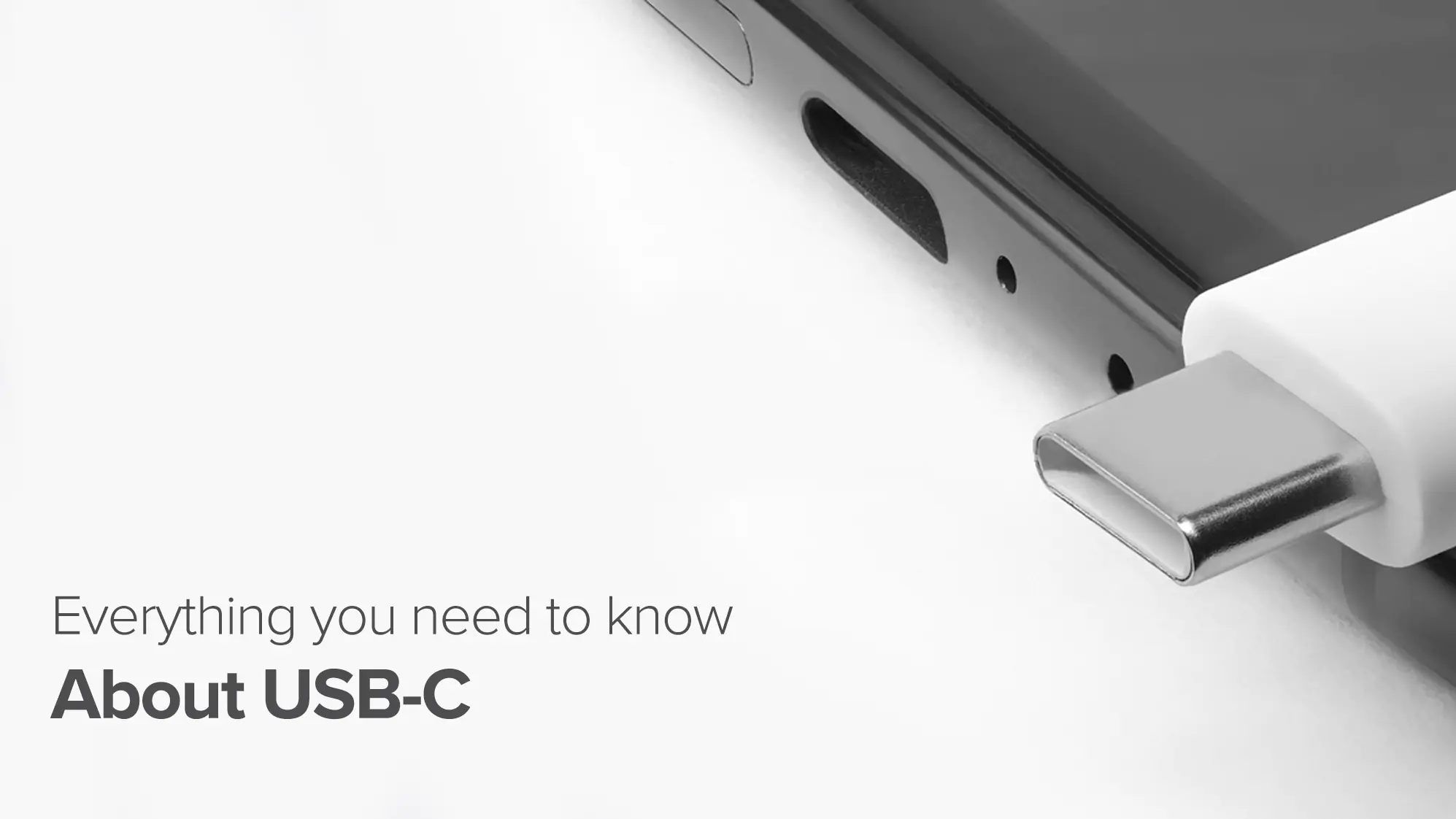What is USB?
USB is a series of standards which specify how the cables connect, communicate and exchange power with electronic devices and related peripherals. The standard of USB defines its speed, maximum power, and cable lengths.
Types of USB Ports and Connectors
The types of USB are broadly divided into three different types namely, USB-A, USB-B and USB-C, which is the newest version with a much smaller size and faster data transfer rate.

Before we get to further level of differentiation between various types of USB ports, let us also know a little about Thunderbolt Technology.
What is Thunderbolt?
Thunderbolt is an interface protocol which is designed for high speed transfer of data along a single cable. Just like USB, it has different standards with their own performance ratings.
Here is a quick table of reference to differentiate the USB Type, standards, and data speed, etc.
|
Standard |
Year Introduced |
Data Transfer Speed |
Connector Types |
Cable Length |
Max. Power |
|
USB 1.1 |
1995 |
12 Mbps |
USB-A; USB-B |
3 m |
2.5W |
|
USB 2.0 |
2000 |
480 Mbps |
USB-A; USB-B; USB Micro-A; USB Micro-B; USB Mini-A; USB Mini-B |
5 m |
2.5W |
|
USB 3.2 Gen 1 |
2008 |
5 Gbps |
USB-A; USB-B; USB Micro-B; USB-C |
3 m |
4.5W |
|
USB 3.2 Gen 2 |
2013 |
10 Gbps |
USB-A; USB-B; USB Micro-B; USB-C |
3 m |
100W |
|
USB 3.2 Gen 2x2 |
2017 |
20 Gbps |
USB-C |
3 m |
100W |
|
Thunderbolt 2 |
2013 |
20 Gbps |
Mini DisplayPort |
3 m |
10W |
|
Thunderbolt 3 |
2015 |
40 Gbps |
USB-C |
2 m |
100 W |
|
USB 4 |
TBA |
Up to 40 Gbps |
USB-C |
- |
100 W |
Now that we are aware of the background and origin of USB-C, let us know further more details about this technology and why is it a revolution in itself:
USB Type C connectors, often called USB-C, are small and thin in shape with an asymmetrical and oval appearance. One of the major and the most distinguished difference between USB-C cable and its previous counterparts is that it is completely reversible, it can be plugged in from either side.
USB-C also supports USB 3.1 but is also backward compatible with both USB 3.0 and USB 2.0.
Most of your devices today require a USB type-C cable.
One specific benefit of USB-C would be felt when you are connecting it to a USB-C monitor. You can deliver the image to the monitor, have it function as a USB hub and if the monitor has its own power source it will also power your laptop through a single Thunderbolt 3 USB-C cable, making it a very ideal docking situation.
If compatible cables and devices are considered, you can expect up to 4K at 60 frames per second to two monitors or 5K at 60 frames per second to a single monitor.
The USB-C is able to supply a lot more considerable amount of power than its previous counterparts, but that’s not the only positive outcome, it can also transfer high speed data while some USB-C devices also allows bidirectional charging, which lets one device charge another, specifically observed in Samsung Galaxy Note 10 Plus.
Also, thanks to the possible 40Gbps data transfer speeds via USB-C, it is easier to plug an external hard drive to vastly expand the storage capacity.
All in all, USB-C is definitely a major step in the right direction, with more and more companies adopting the technology, it will only mean slimmer devices with fewer ports, more flexibility, better rate of transferring data and an even better sound quality.

 JAPAN
JAPAN USA
USA Canada
Canada Australia
Australia New Zealand
New Zealand UK
UK Europe
Europe India
India Singapore
Singapore UAE
UAE Login
Login